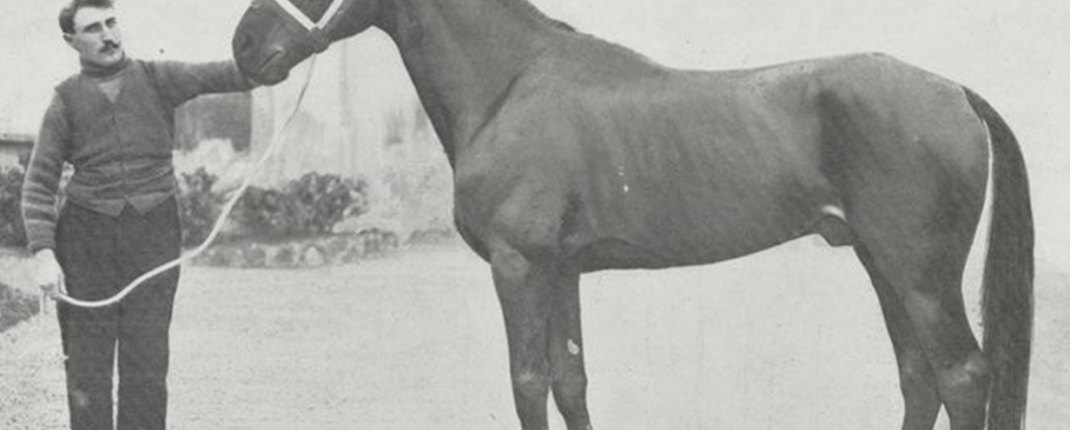The First Great Franco-American
by Lisa Harkema
The Franco-American cross is more popular than ever, and many in the US have also recognized the benefits of such a breeding. It’s often said the cross created a new breed (figuratively, not literally) in the 80s and 90s. Though there is some truth to that, the Franco-American cross was very popular much earlier than that. In fact, more than 100 years ago the French trotter (Trotteur Francais) could not compete with neither the American standardbreds nor the Russian orlov trotters. Then came a French-American cross to establish himself as the first French international star.
The story starts in Midway, Kentucky in 1880 with the birth of Mamie, one of the biggest trotting tail females. Having bought her mother Kit at an auction, her owner Philemon P. Parrish had her covered by Star Almont in 1879 and the following year the filly Mamie was born. Used on the farm at first, she was put in the training of Mike Bowerman at the age of three and was trained down to 1.39,4 (2:40) before the young filly developed a quarter crack which caused her to be taken out of training and covered at the age of three. Mamie ended up having 6 foals, one of which was Helen Leyburn by Onward, born in 1890. In 1895 she was imported to France by the American tycoon Gordon Bennett. A good trotter, she took a record of 1.28 (2:21.3) in Nice in 1897 before ending up later as a broodmare at the studfarm Haras de Janval in Seine-Infèrieure in Normandy. Always covered by the French stallion Kalmia, she first produced the mare Mamie Layburn, originally named Aitzindaria, in 1900 before delivering her full brother Bobichon 1.34 (2:31.1) the following year. Two years later the good trotter Dakota 1.28 (2:21.3) was born, but the star came in 1905 with the colt named Fred Leyburn.
According to the Hoof Beats article They all knew Mamie, by Ken McCarr, the name “Leyburn” has its origin in the novel Robert Elsmere: “Her breeder, Philemon P. Parrish, bred all of Mamie’s daughters and most of the granddaughters as well. Outside of the first foal, all of Mamie’s foals carried the word Leyburn in their name. In the book “Robert Elsmere” there were two characters carrying the names of Catherine and Rose Leyburn. This accounts for the names of the second and third foal of Mamie. As the foals with the Leyburn name did well, the practice was carried on until the entire group of Leyburns were sold to John E. Madden.”
Hello!
I hope you will find our site interesting and educational while digging through all the material we have collected over the years.
Articles
We have a unique collection of articles on the site, historic and informative, and we keep filling it, so do stop by every now and then to check it out. New additions will be announced in the news section too.
Photos
A collection of hundreds of out of the ordinary trotters or significant horses through history of our sport. You will find photos, lifetime marks and earnings, pedigree with cross links to other horses in the collection

